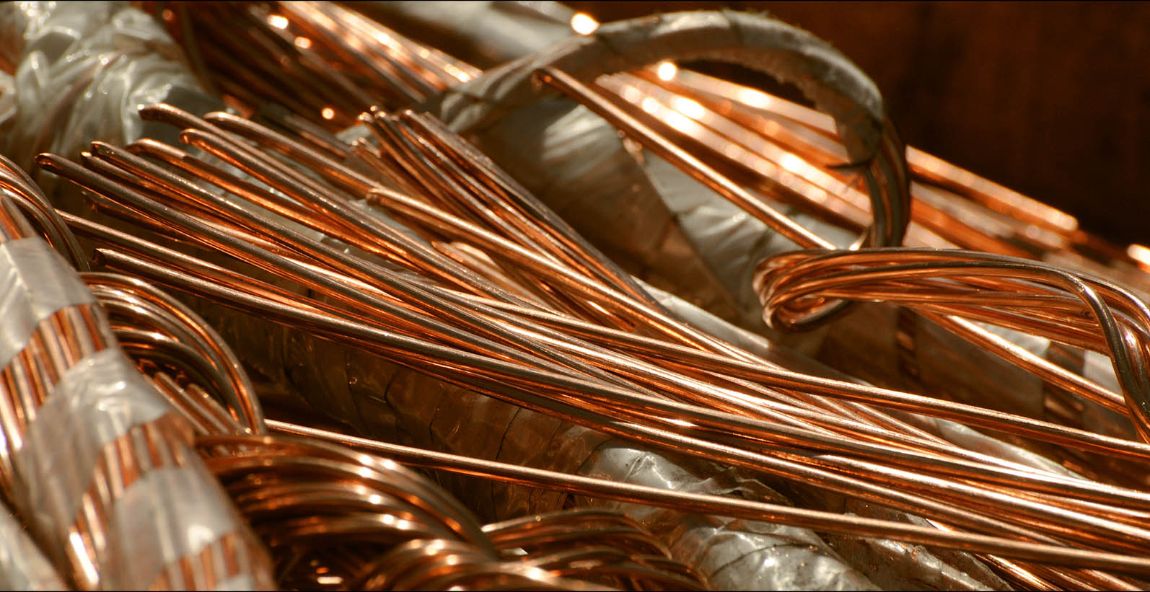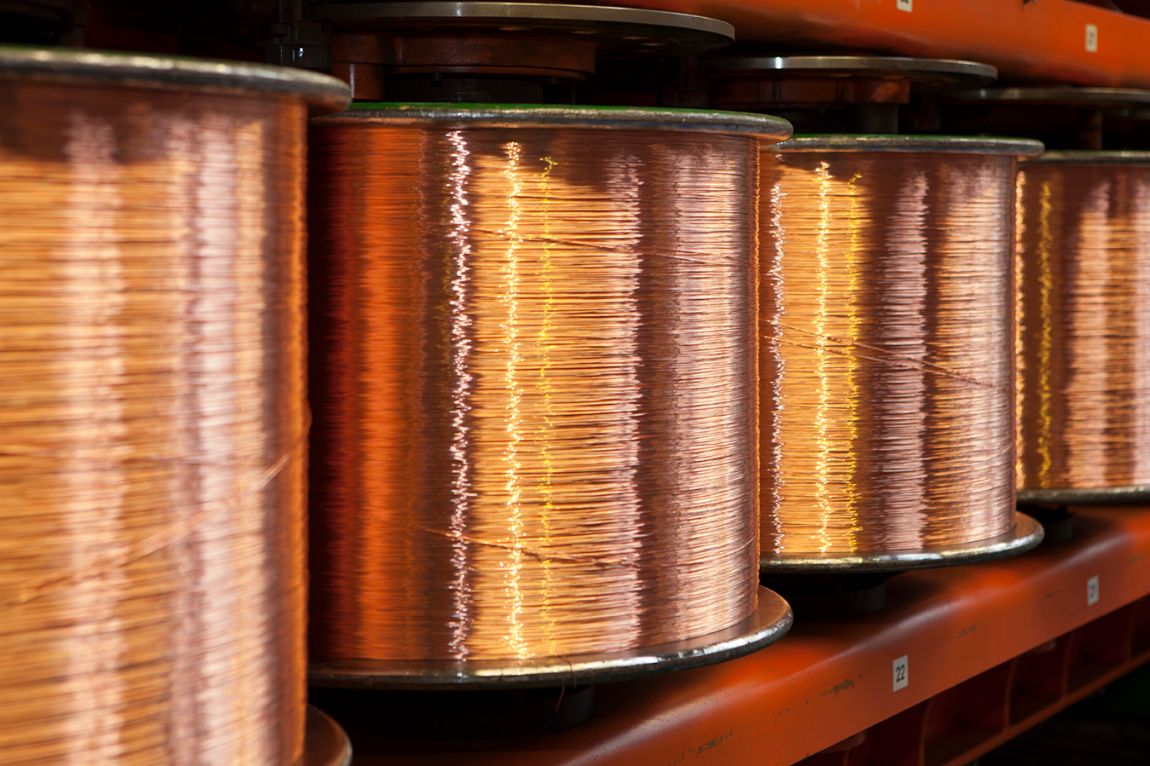- Products
- Markets
- Services & Tools
- Newsroom
- CSR
- Blog
- We are Nexans
- Search
- Contact us
- Compare
- Sign in
Aluminium versus copper
For the longest time there has been a discussion about which material is best for cable conductors. Traditionally, copper is a widely used material, but for some applications, aluminium conductors are preferred. Both metals have advantages and disadvantages that go beyond just the purchase price. So, which material is best for which application?

Proporties of copper
Although there is a lot of competition from other materials, copper remains the most widely used material in nearly all electrical wiring applications.
Pros of copper:
- Copper has very good conductivity;
- Copper is mechanically strong;
- Copper is easy to connect to cable lugs, amongst other things, and easy to press;
- Copper is a semi precious metal, which makes it less susceptible to corrosion;
- Copper is easy to recycle;
- Due to a thinner diameter needed for equel conductivity, copper is easier to process;
- Copper is easy to work with for cable applications.
Cons of copper:
- Copper is a high-weight material;
- Copper has a higher purchase price;
- Copper is a theft-prone material.

The rise of aluminium
While copper is the most used material in electrical wiring, aluminium is also gaining populairity. This material is especially preferred in above-ground electricity transfer because of the various benefits compared to copper. But nowadays, you also see cables with aluminium conductors appear in the traditional low-voltage market.
Pros of aluminium:
- Aluminium is a very low-weight metal;
- Because of the low weight, cables with aluminium are easier to install;
- Aluminium is less theft-prone;
- Aluminium is also suitable for installationwork, both inside and outside;
- Aluminium has a lower purchase price.
Cons of aluminium:
- Aluminium has poorer conductivity, therefore you need bigger cross-sections;
- Aluminium corrodes faster;
- With aluminum, there is possibly a higher risk of malfunctions and potential safety hazards;
- Aluminium breaks easily with repeated bending;
- Aluminium is harder to recycle;
- Applications with aluminium are energy-intensive to produce.

A detailed comparison
If we compare the materials, there are clear differences in electronical, mechanical, chemical and economical proporties.
Conductivity:
Copper conducts better, because of its lower electrical resistance. This allows for smaller conductor cross-sections and cable diameters. For equivalent conductivity, the cross-section of an aluminium conductor must be 1.6 times larger than that of a copper conductor. This means that thicker cables have to be used, which takes up more space. So, when comparing prices, make sure to compare the right cables with each other.
Material strength:
Copper is mechanically stronger than aluminium, which breaks easier with repeated bending. Copper's fatigue limit is 1.6 times higher than the fatigue limit of aluminium. The ultimate tensile strength of copper is 2.8 times higher than that of aluminium. This makes copper a more suitable material for repeated processing and flexible applications.
Oxidation and corrosion:
Because the semi precious copper is much more resistant to oxidation and corrosion, this material has a longer lifespan than aluminium. Aluminium, on the other hand, oxidizes quickly when in contact with open-air. Copper also oxidizes, but the oxide layer affects de conductivity of aluminium much more significantly than that of copper. When aluminum corrodes, it also leads to faster contact corrosion with other metals used. Furthermore, oxidation and corrosion are dangerous for the functioning of the cable. When the end of the conductor is oxidized, the temperature rises and the contact deteriorates. This often results in malfunctions and safety risks. Therefore, connections of aluminium cables need to be checked more frequently.
Connectivity:
With copper conductors, the choice of cable lug is easier. For aluminium conductors special aluminium cable lugs or even bimetal (two different metals that are very tightly connected with each other) cable lugs have to be used, to connect the aluminium conductors to copper surfaces. Copper also has an easier process of pressing. The pressing of aluminium cable lugs, on the other hand, needs to be very precise.
Flexibility:
Low-voltage cables are available with highly flexible copper conductors. These have a smaller bending radius, which improves the cable's processability. There are class 5 cores made of aluminium, although these aluminium wires are more prone to breaking in moving applications.

Recycling:
Copper is easier to recycle than aluminium and can also repeatedly be recycled, without loss of proporties. This saves a lot of resources and energy. Copper is generally also less susceptible to small contaminations and can often be recycled with a higher percentage of contamination. This is possible without significant degredation of the quality. Aluminium, on the other hand, is harder to recycle because it must be completely free of any lead or iron casing or pollution. It requires higher purity, because contaminations can significantly affect the proporties. Because of this, the recycling process of copper is easier, more sustainable and cheaper than aluminium's recycling process.
Lifespan:
Because copper endures less corrosion and oxidation, its lifespan is much higher than that of aluminium. Copper's higher fatigue limit also extends the life span. Based on a life cycle cost analysis (LCCA), the total difference in lifetime costs of copper and aluminium are found to be negligible.
Weight:
Copper's density is higher than aluminium's, therefore copper cables have a higher weight. A copper conductor is about 2.5 times heavier than an aluminium conductor with the same cross-section. This means that for similar conductivity an aluminium conductor is 0,5 times lighter than a copper conductor. Because of aluminium's lower weight, these cables are more suitable for specific applications, such as high-power lines, the automotive industry and aerospace.
Risk of theft:
Copper is known as one of the most stolen metals. As the marketprice rises, theft does too. Currently, a kilogram of red copper yields about 6.75 euros. Especially 'clean' (stripped) copper is alluring for thieves. Copper is also easy to sell, making it even more appealing. Because of copper theft, electricity grids can black out, production processes can shut down and huge financial damages can occur. It is also very dangerous for the thieves themselves, because of the current running through the lines. To prevent copper theft, the lines are sometimes marked with DNA-markers to better trace stolen cables and extra security measures are being taken. However, this cost a lot of money. Aluminium is a much less appealing metal to steal, because it is harder to recycle, making the marketprice low. In comparison: a kilogram of aluminium provides only about 1.40 euros.
Purchase price:
Based on the average copper and aluminium market prices as of March 2024, the purchase price of copper is 3.8 times as high as that of aluminium. Despite the fact that thicker cables have to be used, it can be cheaper to choose aluminium cables in the short term.

Aluminium as armouring
In the cable industry, there is currently debate over whether aluminium is a suitable material for cable armouring. On the Fedet website, an interesting paper has been written about whether cables with aluminium armouring are permitted in the Dutch market. Nexans has deliberately chosen to use armor made of copper wires, and an addition of iron wiring with thicker cross-sections. These materials garantee a safer amouring, including in the long-term.
The choice between aluminium and copper is not as black and white as it seems
Over the entire lifespan, the costs of copper are not that much higher than those of aluminium. Copper offers better electrical, mechanical, and chemical properties in conductor material. Aluminium carries a higher risk of malfunctions, which installers may ultimately be held accountable for by end customers. However, aluminium also has unique advantages, such as being light-weight. Installers and end customers will need to draw their own conclusions and choose the right material for their specific applications.
Do you want to know more about the way Nexans casts and recycles copper? Watch this video on our YouTube channel WHAT'S WATT!
Do you want to know more about the way Nexans casts and recycles copper? Watch this video on our YouTube channel WHAT'S WATT!
Our websites
Select your country to find our products and solutions
-
Africa
- Africa
- Ghana
- Ivory Coast
- Morocco
- North West Africa
- Americas
- Asia
- Europe
- Oceania

